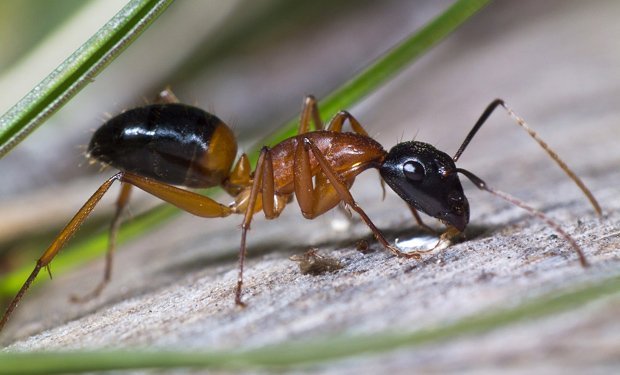Lost ants use visual cues to quickly navigate

DESPITE THEIR SMALL SIZE in a big world ants are known to be excellent navigators. Now, new research sheds light on how some insects figure out when they’re lost.
Instead of relying on their innate homing devices, banded sugar ants (Camponotus consobrinus) use visual cues to find their way around.
When these ants are taken to a novel location, they immediately realise they are lost and adjust the way they navigate. Rather than deferring to information gathered by their internal compass and odometer (a system known as ‘path integration’, which allows them to record how far, and in which direction, they’ve travelled), they seek out familiar landmarks to orient themselves.
“This is the first example of an ant that doesn’t utilise path integration information at all when displaced to an unfamiliar environment,” says lead researcher Eliza Middleton from The Vision Centre and the Australian National University. “It was a completely unexpected result.”
Visual cues help ants quickly realise they’re lost
For their study, presented at the 10th International Congress of Neuroethology in the US in August, Eliza and her team captured ants that were returning to their nest and released them at two new locations: a local site, which was within the ants’ usual foraging range, and a remote site, which was completely unfamiliar.
Under normal circumstances, most ants navigate by combining knowledge of their environment – memorising landmarks at their nest, along their foraging route and at their feeding site – with path integration, which allows them to determine the most direct route back to the nest, even if their foraging journey has involved a series of twists and turns.
If an ant is picked up and transferred to an unfamiliar location, it uses the path integration information it gathered en route to the feeding site and heads off in the direction that would have been correct from there. Often, when the ant is about halfway to the assumed nest location, it begins searching for familiar landmarks.
Banded sugar ants, however, immediately realise they are lost and suppress path integration. “They do not walk in the perceived home-bound direction at all, but start searching for landmarks immediately,” Eliza told Australian Geographic.
Complex habitat, complex navigation
Eliza believes the behaviour is linked to the visual complexity of their habitats. The species is most commonly found in densely forested, suburban areas filled with landmarks such as tall buildings, trees and gardens.
“They are heavily reliant and familiar with the landmark array along their normal foraging routes and when they are displaced they are able to instantly recognise they are lost,” she says. “Using the path integrator in this instance actually may take the ant further away from the nest, so it may be more useful for them to search for something familiar to use as a navigational cue.”
Researchers believe other ant species could behave in a similar way.
“I don’t think this is so much a species-dependent behaviour, but rather it may depend on the environment,” Eliza says.
Professor Ken Cheng from Macquarie University in Sydney agrees. He says that over time, ants may have adapted their behaviour to suit their environment. Studying the phenomenon further could provide scientists with important clues about the evolution of insect intelligence.
“Few species have been studied, and we need a lot more comparisons to figure out how living in different habitats might have shaped the evolution of cognition and intelligence in animals,” Ken says. “It is beginning to look like all ants have a common toolkit when it comes to navigation, but they use it differently depending on a combination of their experiences in life and their evolutionary history. Studying how sugar ants navigate will contribute to our knowledge of this wonderfully complex and clever group of animals, the insects.”
RELATED STORIES




